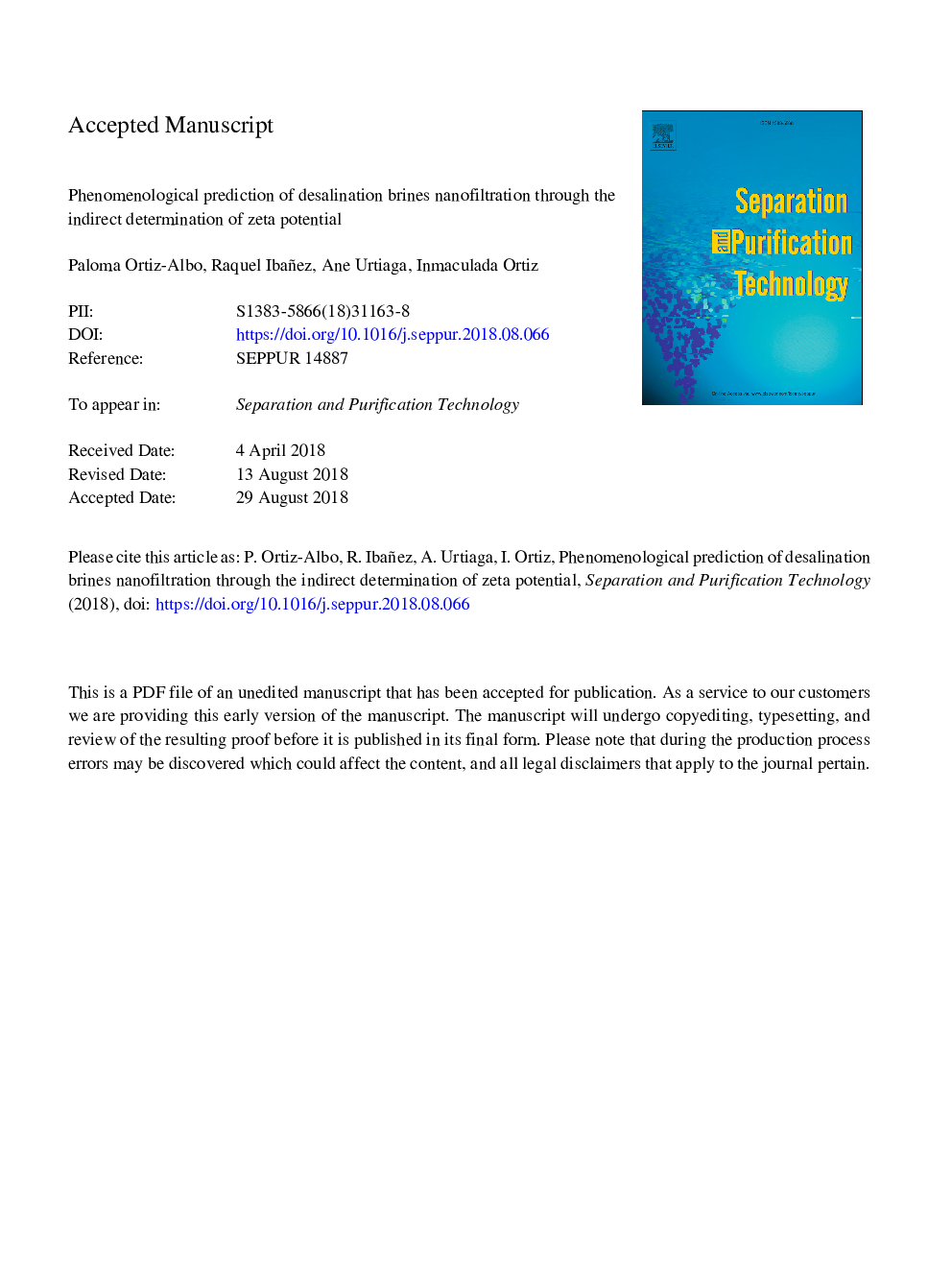| Article ID | Journal | Published Year | Pages | File Type |
|---|---|---|---|---|
| 11003307 | Separation and Purification Technology | 2019 | 33 Pages |
Abstract
The prediction of nanofiltration (NF) performance at environmentally relevant conditions, e.g.: highly saline brine solutions, is becoming of increasing interest for the recovery of waste materials in the water desalination industry. In this work, the prediction of the separation of sulfate and chloride contained in the retentate of reverse osmosis brackish water desalination by means of the commercial NF270 membrane is studied. Prior to theoretical modelling, streaming potential measurements were performed for aqueous single and binary mixtures of NaCl and Na2SO4 within the range of ionic strengths 1-100â¯mol/m3. Zeta potential values were obtained applying an extrapolation method from recent literature to allow the calculation of surface charge density under higher ionic strengths found in reverse osmosis desalination brines (100-1200â¯mol/m3). Then, the obtained surface charge density was used to simulate sulfate, chloride and sodium rejections by means of the Donnan steric pore model (DSPM), in the pressure range 2-20â¯bar. The good agreement between experimental and simulated rejection values allows validating the approach that enables the prediction of NF performance for the separation of monovalent and divalent anions, of interest for the purification of desalination brines before their further exploitation as a source of sodium chloride concentrated solutions.
Related Topics
Physical Sciences and Engineering
Chemical Engineering
Filtration and Separation
Authors
Paloma Ortiz-Albo, Raquel Ibañez, Ane Urtiaga, Inmaculada Ortiz,
